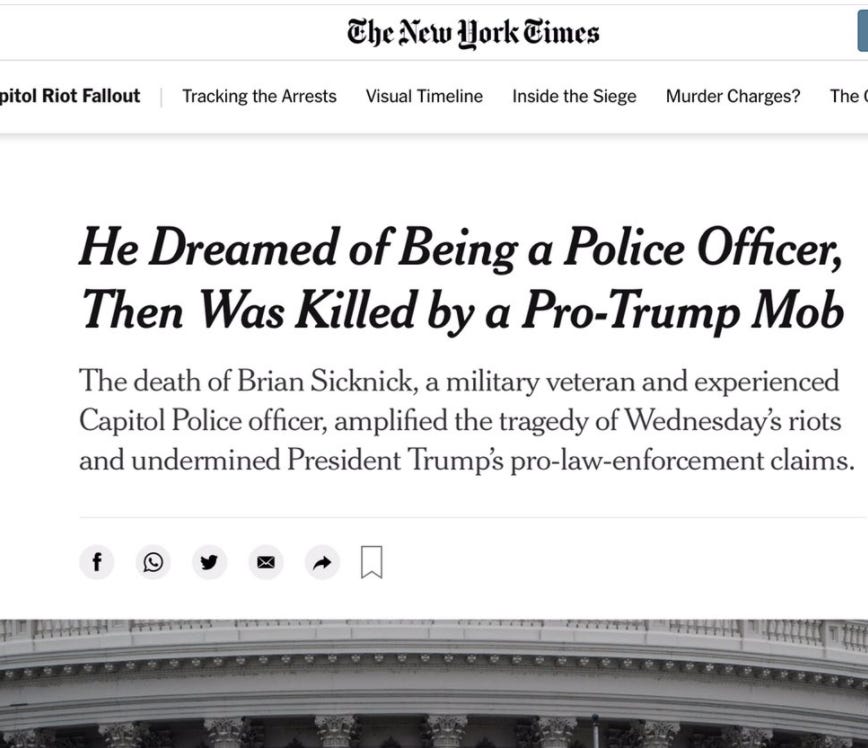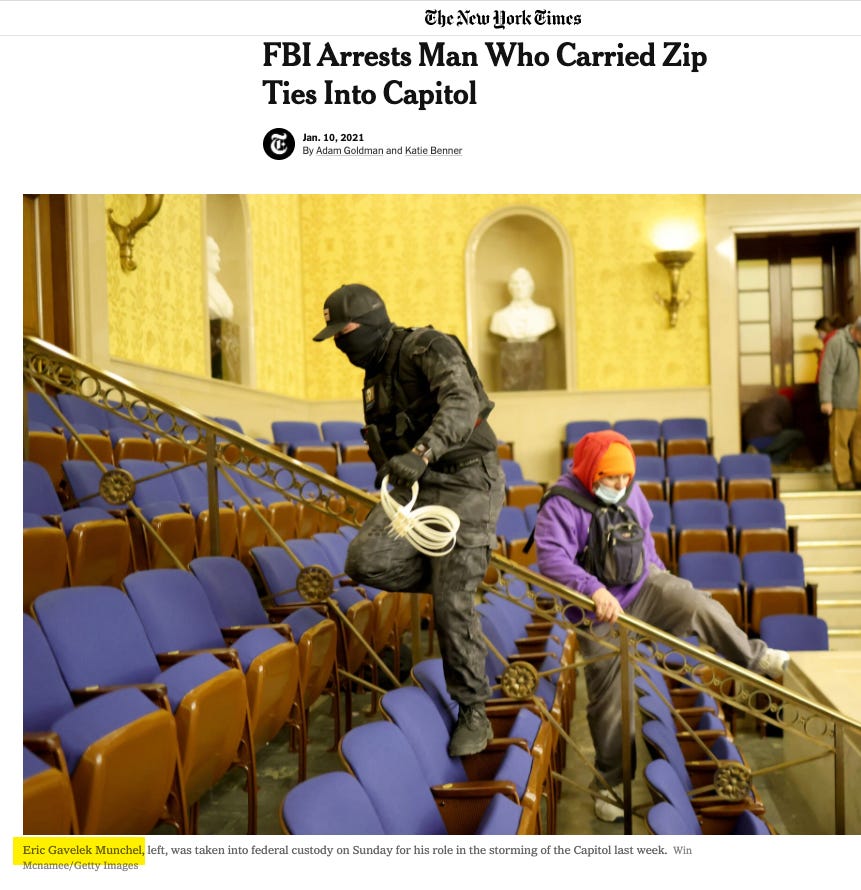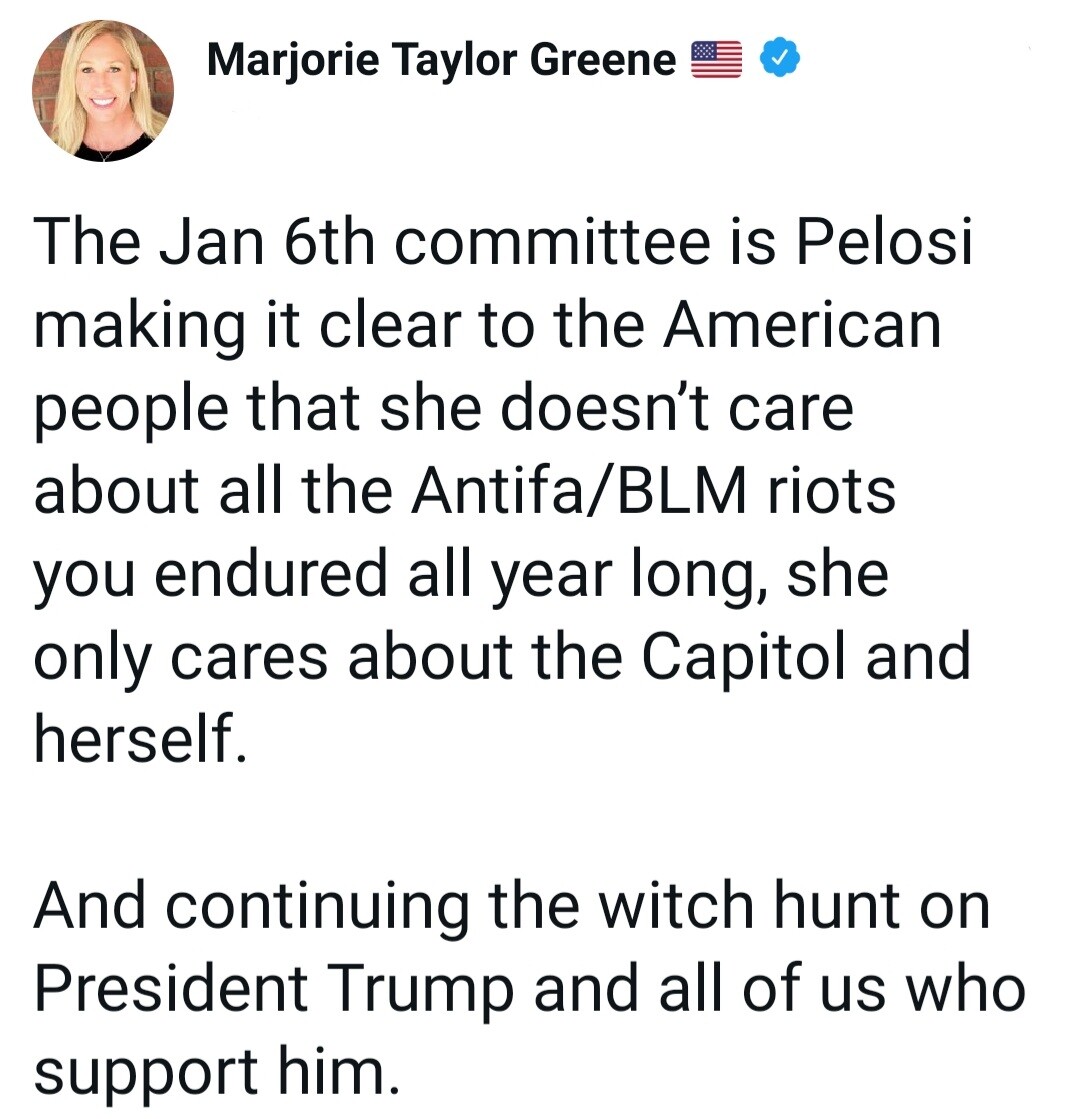The sedition hunters don’t have to worry much about upsetting any Trump supporters with nicknames like “Bubba Two Hat” or “Bullhorn Karen;” they may come from different backgrounds, but there aren’t many Trump fans in the mix.
The sleuths say their primary motivation is to their country, and want to bring those who participated in the riot to justice. They may take a bit of glee in how easy some of the Trump supporters made their work in some cases: Making social media posts about your commission of a federal crime probably isn’t the smartest move in the world, nor is committing crimes with your uncovered face when there was a perfectly valid reason — a mandate, in fact — to wear a mask. But they say their primary motivation and focus is getting justice for the victims of the Capitol attack and trying to ensure the violence of Jan. 6 is not repeated.
“This is not a hit job,” said a sedition hunter who goes by Dianna. “I can’t say what I’d’ve done if it had been a million women marching in pussy hats who attacked the Capitol. But guess what? That didn’t happen. We don’t live in that world.”
The ‘Holy Shit’ MomentsJoan, the mom from Pennsylvania, stumbled into the sedition hunters world by chance. Someone in the budding community reached out through a political Facebook group she runs, hoping for publicity. The internet detectives were trying to identify the man who stormed onto the floor of the U.S. Senate wearing a “Hershey Christian Academy” sweatshirt, and they thought she could help spread the word.
Joan got to work. She went to Hershey Christian Academy’s Facebook page and started digging, learning everything she could about the small school with barely a dozen staff members. It had only opened in 2019, and now ― because someone had the bright idea of breaking into the Capitol while wearing school swag ― it was at the center of the insurrection.
“I went and started looking at all the likes, all the comments. Then on every single like and comment I would go look on their profile and snoop around and say, ‘Oh, that guy’s too fat, that guy’s too bald, that guy’s too bearded, it’s not him,’” she said.
Soon she stumbled on a “pretty vanilla” Facebook profile of a man named Zeeker whose main photo was of a snowman. When she plugged Zeeker’s name into Facebook’s search bar, she turned up photos that he’d been tagged in. She realized she might just have a match. She took some screenshots, poked around his Instagram, and did a bit of Googling.
“Zeeker Bozell,” she learned, was
Brent Bozell IV — as in the son of Brent Bozell III, the high-profile conservative activist and founder of the Media Research Center, and grandson of Brent Bozell Jr., the ghostwriter for Barry Goldwater and supporter of Joseph McCarthy.
“Whoa,” she thought as she went down a Google rabbit hole and read his grandfather’s Wikipedia page, which laid out the family’s ties to William F. Buckley, who founded the National Review and is considered the intellectual godfather of the conservative movement. “I’ve really stumbled on something.”
“I mean, I’m just, like, a mom,” Joan later told me. “It was kind of a holy shit moment.”
The FBI enlisting the public’s help to hunt down criminals is not a new phenomenon. Even back in its early days, when it was still called the Bureau of Investigation, it crowdsourced the hunt for the people who kidnapped Charles Lindbergh’s baby by distributing pamphlets across New York banks that listed the serial numbers for the expiring gold certificates that had been used in the ransom payoff, and eventually got a hit after a sharp gas station attendant thought to jot down a license plate number on the margin of the certificate.
By 1950, former FBI Director J. Edgar Hoover had launched the FBI’s Most Wanted list in an effort to have the public help hunt down dangerous fugitives. During the hunt for the Unabomber in the 1990s, investigators deployed a media strategy that bumped up against internal FBI rules about how much information could be shared about an ongoing investigation, and former Attorney General Janet Reno eventually approved the task force’s decision to publish Ted Kaczynski’s manifesto in hopes of enlisting the public’s help in identifying him.
Twenty-five years after The Washington Post and New York Times
published the Unabomber manifesto, Kaczynski’s worst nightmares about technology are reality. The Capitol defendants have been sucked into a
digital dragnet: They’ve been captured on surveillance footage, caught on countless cell phone photos, nabbed on police body camera footage. The cell phones in their pockets, in addition to pinging towers that would allow the feds to easily pinpoint their location with a search warrant, also spewed location data to various apps like Facebook, which was not only a forum for Capitol insurrections to document their criminal activity, but also the place where they were radicalized in the first place.
The problem for the FBI isn’t a lack of leads. It’s that they’re drowning in information, and the federal bureaucracy isn’t equipped for this kind of workflow. Hundreds of thousands of tips is a lot to work through, even for a world premier law enforcement organization.
Many sleuths have adapted to the pace of federal investigations, but there are still a lot of the decisions that leave them scratching their heads. The
semi-famous QAnon supporters ― previously featured on Vice News and in a HBO documentary ― who were arrested by the FBI last week? Sleuths had the husband pegged back in April after the FBI posted his photo, and wondered why the feds didn’t just Google the names in the article that featured the image. When the FBI raided the home of an Alaska woman the bureau had
mistaken for another Trump supporter who’d entered the Capitol and grabbed a laptop in Nancy Pelosi’s office, online investigators didn’t get why the FBI hadn’t taken a closer look at her husband’s public Instagram page, which was cited in the search warrant and made it clear they had the wrong woman.
It’s a bit exhilarating to be a few steps ahead of an FBI investigation, to know what’s coming weeks or even months before the feds arrive at the door of a Capitol rioter. Chris Sigurdson knows the feeling better than most. The Canadian man has submitted at least half a dozen tips to the FBI, but hadn’t heard anything back from the bureau when I spoke to him in April. But his Twitter handle did pop up in an FBI affidavit without warning in February, an experience he described as “surreal.”
“If someone tried to design the whole system in which all of these sedition hunters are operating, you couldn’t create it,” Sigurdson said. “It emerged organically, not just out of this event, but from Charlottesville and that whole experience of trying to identify people involved with that.”
Sigurdson, like a lot of sedition hunters, found the initial days exhilarating. Over time, he said, the work transformed from less of a side hobby to more of an obligation. “Once I had to open up a spreadsheet so I could keep track of everything, suddenly it felt less like an online adventure game and more like an occupation,” Sigurdson said.
‘How Did You Get All Of This?’Joan dialed in her tip to the FBI’s National Threat Operations Center in mid-January, just after midnight. The bureau was completely overwhelmed in the aftermath of Jan. 6, so she was stuck on hold for about 45 minutes. She gave her info, and waited for the FBI to get in touch.
Ten days later, an FBI agent gave her a call. Joan laid everything out. What Joan called her “weird little detective hobby” had left the FBI special agent impressed. ”How did you get all of this just from seeing his picture?” she said he asked her. ”You got his whole life story!”
But the FBI was swamped. Thousands of tips were pouring in everyday, and sorting through the chaos was a logistical nightmare. The charges against Bozell wouldn’t come through for weeks. Joan had at least gotten a call back ― a real, live FBI special agent was on the case. Still, like thousands of other FBI tipsters, Joan grew a bit impatient as time dragged on. ”Come on,” she thought, ”I handed this guy to you on a silver platter! Where is his arrest?”
Finally, it happened: Leo Brent Bozell IV ― aka “Zeeker” ― was arrested, and the charges against him unsealed.
Joan kept going, taking to the broader hunt for insurrectionists with zeal as she scoured videos and followed suspects known only by a hashtag as part of the crowdsourced efforts. She kept an eye out for Bozell too, and she eventually spotted that sweatshirt again. Twice, in fact. In one video, Bozell is on the front line of the battle with police officers, attempting to rip down a tarp and let the mob through. In another, he’s smashing a Capitol window. So weeks after she helped the FBI identify Bozell, she pointed federal authorities to evidence they seem to have overlooked.
“Thank you very much for this new information,” the FBI special agent wrote in an email after Joan passed along links. “I will make sure I share this with the prosecutors in the case.”
The next day, prosecutors presented their evidence before a federal grand jury in Washington, which indicted Bozell on seven counts. Among the new felony charges: destruction of government property for breaking a window.
Joan was blown away — and a bit intimidated — by the role she’d played in identifying a member of a conservative political dynasty as a Capitol insurrectionist and helping the FBI build the case against him. A hobby Joan snuck in while taking care of her kids could land Bozell — the namesake of men who were at the forefront of America’s conservative movement for the better part of a century — in federal prison.
Joan is now all-in on her sedition hunters work. She’s got her files organized and continues sending information to the FBI, and uses an anonymous Twitter account to keep the world informed about the activities of Capitol rioters who have been charged (or who will soon be arrested). She’s mapping out the networks of Jan. 6 riot participants, including many of whom traveled to D.C. on buses paid for by Pennsylvania state Sen. Doug Mastriano, a right-wing Republican with a big Facebook following who gained notoriety by promoting Trump’s big lie about the election and is now weighing a run for governor.
“You can get really deep in there and addicted,” Joan said. “You can spend hours going down this rabbit hole.”
And she remains astonished that Bozell wore a sweatshirt bearing the name of a tiny school his child attended as he stormed the U.S. Capitol, smashed out a window, and took over the floor of the U.S. Senate in an attempt to overturn the election on behalf of Donald Trump.
“He probably would’ve gotten away with it,” Joan joked, “if it weren’t for these meddling sleuths.”
Damage is seen inside the US Capitol building early on January 7, 2021 in Washington, DC (Photo by OLIVIER DOULIERY/AFP via Getty Images)
The New York Times, in a now-”updated” article, Jan. 8, 2021
Clockwise: Tweet of Associated Press, Jan. 29; Tweet of NBC’s Richard Engel, Jan. 9; Tweet of the Lincoln Project’s Fred Willman, Jan. 29; Tweet of The New York Times’ Nicholas Kirstof, Jan. 9
Caption that now sits atop both New York Times articles from Jan. 8 about Officer SIcknick’s death.
Laurence Tribe @tribelaw
NBC News, Jan. 15, 2021






 Reply With Quote
Reply With Quote







